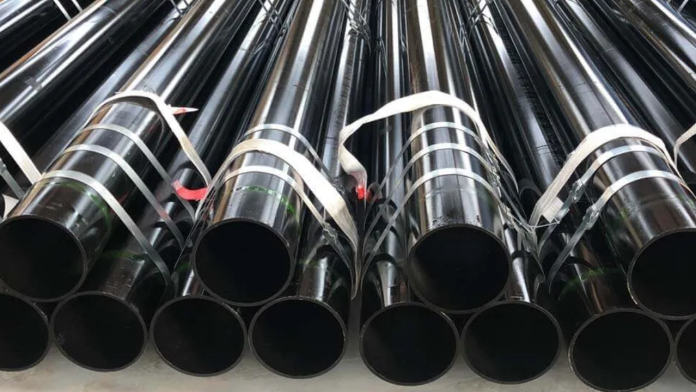A steel pipe weight chart serves as a critical reference device in engineering and production, supplying crucial statistics about the weight in line with the unit length of diverse steel pipe sizes and configurations. This chart generally info the weight in kilos per foot or kilograms in keeping with meter, primarily based on standardized dimensions and wall thicknesses.
Engineers rely upon this information to accurately estimate fabric requirements, ensure structural integrity, and choose pipes that meet particular weight-bearing and operational criteria. Utilizing the steel pipe weight chart, stakeholders can make knowledgeable selections that optimize price-effectiveness, safety, and environmental sustainability for the lifecycle of infrastructure projects, from layout and procurement to set up and protection.
Significance of Steel Pipe Weight Charts
Consulting a steel pipe weight chart is vital in engineering and production tasks for numerous essential motives that impact layout, protection, performance, and cost-effectiveness. Right here’s an exploration of why it’s important to consult those charts:
Accurate Material Estimation
Steel pipe weight charts provide particular data approximately the weight according to unit length (generally in step with foot or consistent with meter) of numerous pipe sizes and configurations. This fact is vital for estimating the whole amount of steel required for a challenge. By using the chart, engineers can calculate the quantity of steel needed for piping structures, structural supports, and different packages appropriately.
Structural Integrity
The weight of steel pipes at once affects their structural integrity and cargo-bearing potential. Heavier pipes with thicker partitions can resist better pressures, help heavier hundreds, and face up to deformation or failure underneath strain. By way of regarding the weight chart, engineers can select pipes that meet the desired power and durability standards for unique applications.
Compatibility with Fittings
The steel pipe weight charts also specify the nominal sizes and dimensions of pipes, ensuring compatibility with fittings, connectors, and help systems. Standardized dimensions permit for seamless integration of pipes into existing systems or in the course of new installations. Engineers can verify that fittings facilitate smooth assembly and lower the probability of mistakes in the course of production.
Cost-Effectiveness
Choosing steel pipes based on correct weight facts from the chart contributes to cost-effectiveness in several ways. Through optimizing using materials, engineers can reduce excess stock and garage fees. Moreover, selecting pipes that meet performance necessities without unnecessary weight or thickness allows management of production and transportation fees.
Protection and Regulatory Compliance
Safety is paramount in engineering and production. Steel pipe weight charts offer important records to ensure compliance with safety standards and rules. By deciding on pipes with suitable weight and energy traits, engineers mitigate risks related to structural failure, leaks, or environmental dangers. Compliance with industry standards consisting of ASTM, ASME, and ANSI, as indicated inside the weight chart, assures that pipes meet nice and overall performance benchmarks, enhancing overall undertaking safety and reliability.
Environmental Impact
The weight of steel pipes also influences their environmental footprint for the duration of their lifecycle. Light-weight pipes require less electricity for production and transportation, contributing to decreased carbon emissions and environmental effects. Conversely, heavier pipes may additionally provide extra durability and durability, potentially reducing the need for frequent replacements and associated environmental expenses.
Operational Efficiency
Efficient task planning and execution rely upon correct statistics from steel pipe weight charts. Engineers can plan logistics, such as transportation and installation, based on the weight and dimensions furnished. Well-deliberate logistics minimize downtime, optimize labor sources, and decorate typical project performance from construction through to commissioning and operation.
Final Talk
Engineers depend upon weight charts to make informed selections that help mission dreams, from designing strong infrastructure to optimizing resource utilization and meeting regulatory necessities. Via leveraging correct weight data, stakeholders can obtain successful undertaking consequences that prioritize protection, durability, sustainability, and standard overall performance in diverse business and civil engineering packages.










